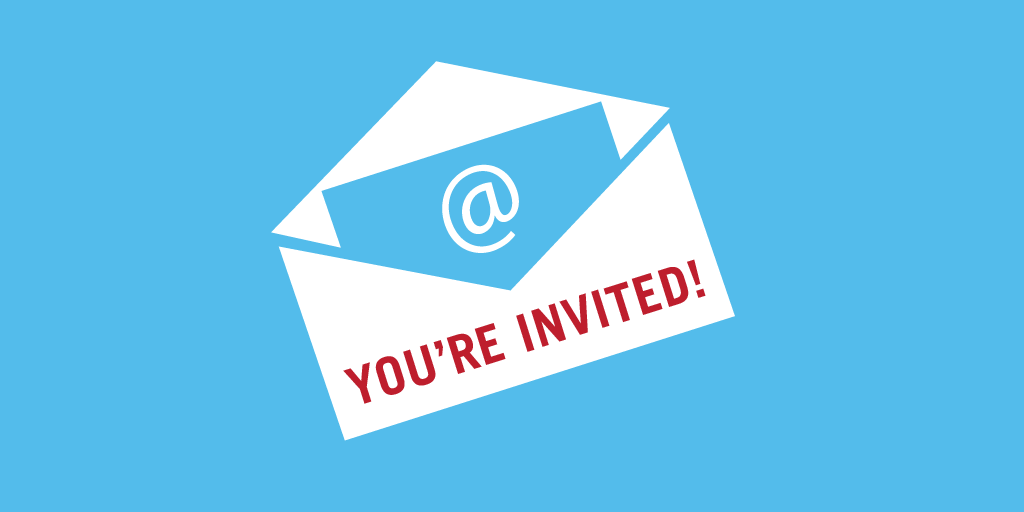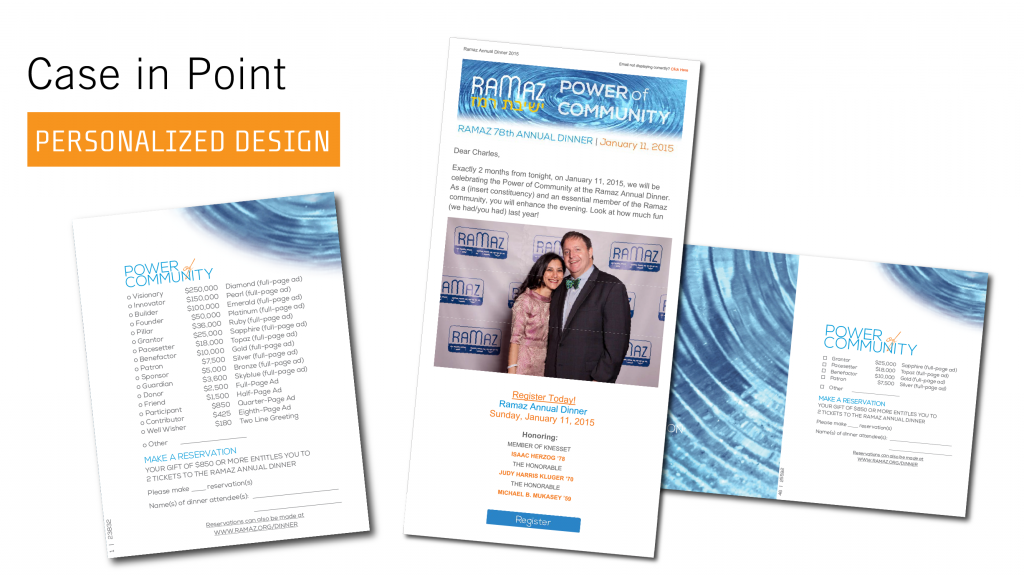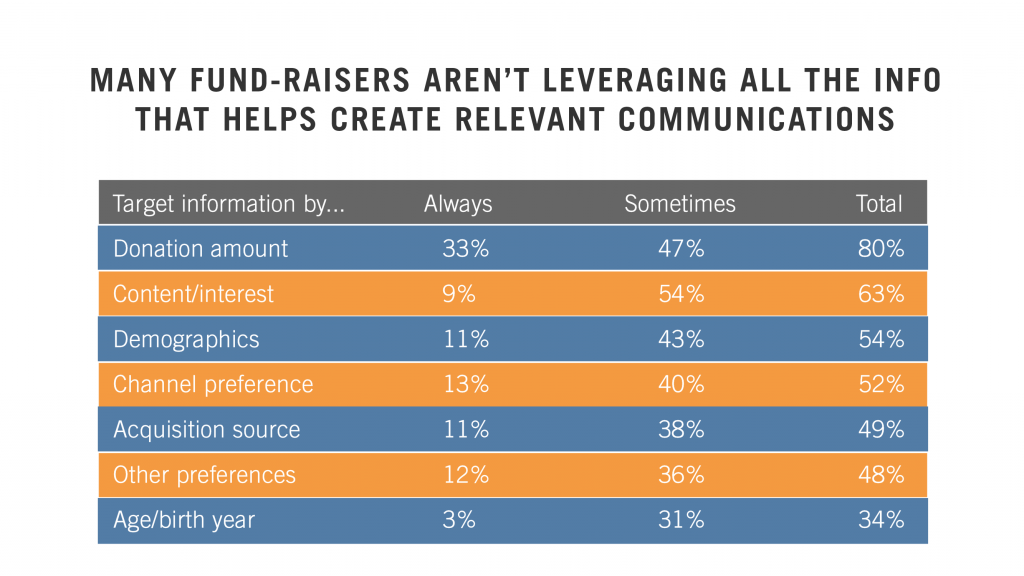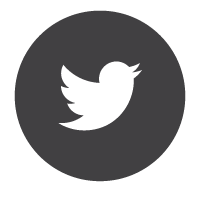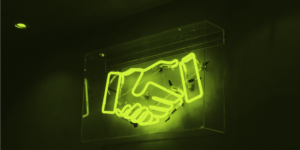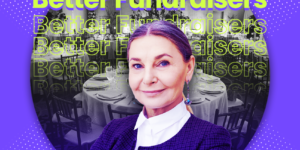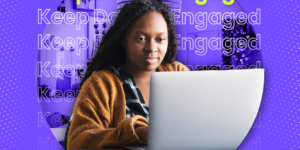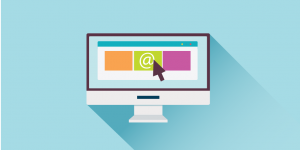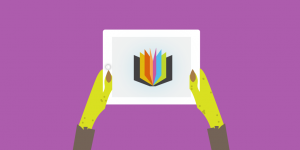Special events are important, because for many they’re the central component of annual fundraising. While all hands are on deck for several months around the big day, the individual (or small team of individuals) wearing the Development hat are charged with multiple tasks aside from filling the room. Like any fundraising initiative, it’s crucial to strike the balance of reaching enough people and reaching the right people. In order to do that successfully, you have to personalize communications to various groups of donors (or potential donors) while telling a story that compels these people to support your organization.
Email is an excellent way to communicate with your audiences around special events. In the case of promotion, word of mouth is going to play a big role in spreading the word. Email allows interested parties to quickly and easily share information about what’s going on, particularly if the content is relevant and personal. Today we’ll discuss small changes that you can make to the you engage with constituents for events via email that will help yield higher results.
Looks Are Important
When it comes to any communications, design matters. Whether your event marketing campaign begins with email or not, the look and feel of each piece should be consistent. Graphic elements, fonts, and color scheme for emails and direct mail pieces should be cohesive. The tone of voice and underlying theme or message should also fall in line from touch to touch. If you’ve got the resources for a professional designer to work on collateral beyond your invitation, then gathering the necessary digital assets is easy. If you’re working on your own, keeping the colors consistent and the layout simple is another way you can achieve this.
Compelling imagery is also your friend, which leads us to our next point: pictures are worth a thousand words because they communicate a message. Photos can also help last year’s guests recall the great time they had, or remind those who weren’t in attendance of the what they missed out on. In the case of capturing new patrons, use images that will tell your organization’s story. Photos like this can demonstrate your work in action, put a face on your cause, and evoke emotion that inspires action.
What can this do for you?
Deeply personalized campaigns receive 2 times the average response rate of static messaging alone.
+ Check out this Case Study on the Ramaz School Annual Dinner.
Know What You Want & Create a Sense of Urgency
This may seem elementary, but the whole purpose of marketing your event is because your want your recipients to do something. Through the use of strong design, captivating images, and eloquent but succinct copy, you’re slowly creating a pathway for engagement; but the path needs to lead somewhere. This is where a call to action comes into play.
A call to action is a tool marketers use to get people to do something, like signing up for a newsletter or buying a product, a typically appears as a button. For fundraisers, the calls to action are simple and few: buy tickets now, purchase an ad, become a sponsor. Have an objective for each email that clearly guides your recipients to take action. Keep in mind that too many pathways and too many prompts creates message confusion, which can result in drop-offs. Take a look at the image above, which is a shot of some materials for the Ramaz School’s Annual Dinner including an email in the center. Beneath a short message, large image, and pertinent details about the event is one single call to action: register.
Another tactic in this arena is establishing a sense of urgency. Take note of the messages you see today. You’ll notice that many of the calls to action you encounter include words like now or today. Language like this subconsciously encourages people to follow through rather than waiting to respond, or flagging an email to return to later. The objective is to move people through to action quickly and easily so they can begin receiving the next rounds of communication which we’ll talk about next.
Personalize Wherever and However Possible
Plain and simple: different segments receive emails with copy and content relevant to them. This should be pretty easy based on the information gleaned from them in that follow up message we talked about above.

Here’s an example for fundraisers: regular annual donors might get different content than lapsed donors or prospective donors. You might provide a unique story in an email going out to prospective donors about who or what your upcoming event benefits. Emails can also refer recipients to links that are relevant to the particular target segment from which they come.
Also, don’t underestimate the power of a good subject line. Many e-mail marketing companies, like MailChimp for example, allow you to easily drop information like a recipient’s name into the subject line.You might think that people have become cynical about seeing their name in a subject line, but a study conducted by AWeber and reported by Marketing Sherpa leads to the opposite conclusion. In a series of seven email campaigns, half the recipients received an email with their name in the subject line and the other half didn’t. The open rate on the personalized emails was on average 5.13% higher than the regular emails and the click-through rate was a staggering 17.36% higher!
What could this do for you?
The open rate on the personalized emails was on average 5.13% higher than the regular emails and the click-through rate was a staggering 17.36% higher!
Stagger Messages Based on Engagement and Action
Back in November we dissected a 3-touch email campaign to give fundraisers a better sense of how they can get the most out of their communications through being more relevant and in tune with how users were engaging. Regardless of what you’re talking about, the key is to continually find ways to connect with your audience in a meaningful way and optimizing future communications based on the actions taken previously.
Before you start, develop your flow of messaging. Initial emails begin with laying out important information that educates about the event. Calls to action here may be learn more or register today. As you move through your campaign, you’ll begin rolling out solicitations strategically. This is where your segmenting your list really comes into play. For example, those who purchase tickets should no longer receive messages to buy tickets, but should receive emails about buying an ad or about something they’ll experience at the event itself.
Take a look at some options for a second touch based on engagement from our past post which we’ve summarized as a chart below:
The Wrap Up
All good campaigns should be integrated, and email is just one of many components. If email is one of your primary action channels, be sure to use social media, your website, and other strategic partnerships to support your communication efforts. Be sure to find a balance between solicitation and storytelling to keep people engaged and to prevent donor fatigue. If you’re keeping an eye on engagement, your story will unfold for your audience rather than feeling redundant. Small changes to the way you approach your digital communications can go a long way to boosting end action rates. Take a look at our case studies to see in detail how these approaches have worked for clients.
Like what you see? Stay in touch!
You Might Also Enjoy:
+ The Golden Ticket: 3 Things Every Organization Must Do Before Marketing an Event
+ How to Get Personal
+ How to Make Your End of Year Emails Go the Extra Mile

